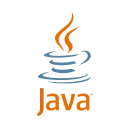Stage 4 is called the Take-off Stage, where companies already have different divisions and procedures in place, but they are far from perfect. The number of employees typically range from 100 to 1,000, depending on the industry and the company structure. Productivity is low, lots of manual work, fraud, lack of data to identify business problems accurately, and there is no unity among the different divisions. At this stage, managers’ ability to handle increasing complexity as well as systems and procedures are crucial, and companies can move on to the next stage through coordination. At this stage, ERP and HR systems become more crucial, and some system customizations are needed to fully support growth. By using additional technologies to automate complex finance processes, CFOs can focus on identifying new value-adding services, such as automatically forecasting long-term real estate value or predicting pricing based on consumer behavior.
What if non-banking enterprises could offer their own debit cards for loyalty or loans on products at your website? Banking as a service is a big opportunity for non-banking companies to deliver uninterrupted customer journeys and achieve multiple customer touchpoints. From payment solutions for fintechs to retail banking services, BaaS is an example of digital finance transformation with positive disruption.

Digital transformation is not a one-time fix, but rather a continual adaptation to evolving customer needs, environments, and technologies. Gain insights into the operational effectiveness of Finance processes to drive greater efficiencies, while improving cost and controls. Our human-led tech-powered approach can help you look at problems from new angles to reimagine your finance function beyond the boundaries of today. Our accounting and reporting solutions are underpinned by state-of-the-art digital enablers, such as EY DigiFAAS, EY LAN and EY Policy Sphere, to significantly enhance the efficiencies of finance and accounting teams and ensure better compliance.
Leverage Digital Transformation for Better Customer Experience
With digital initiatives and innovations changing rapidly, it may be difficult for CFOs and corporate finance teams to choose the path and tools that are right for them. Keep in mind, the number and type of technologies being used to drive efficiency, agility and productivity are expanding. Whether they realize it or not, many finance organizations are beginning a multiyear journey toward a futuristic but inevitable autonomous http://sokrashenno.ru/avto192.html finance function. With autonomous finance, governance and guidance processes are significantly augmented by artificial intelligence and automated through blockchain and robotics. The majority of day-to-day finance activities are location-agnostic and performed through shared delivery models with little to no human intervention. CFOs need a finance function that drives the strategic ambitions of the enterprise.
But significant barriers to digitisation, around infrastructure and attitudes to change, still exist and are slowing progress. Enterprises start by envisioning the experience they want customers to have with their product and their brand for as many months or years as they want them to be customers. This objective means they must analyze their market, along with technology trends, to forecast or anticipate how customer needs or expectations may change and to spot opportunities for disruption. Blockchain is a distributed, permanent and immutable ledger or record of electronic transactions. Blockchain provides total transaction transparency to those who require it and is inaccessible to those that don't.
Those leaders expect to see a function that is leaner , digital and data-driven. Organizations then determine how they must transform the digital business from end-to-end, including infrastructure, product development, operations, and workflows. And finally, they bring the customer experience to life and improve it continually in response to opportunity and change. Driven by market demand and fueled by technology, digital transformation means adopting digital-first customer, business partner and employee experiences. As new players—such as fintechs, neobanks, and Big Tech—enter the arena, they will focus on building these hyper-personalized experiences to help consumers take control of their finances. They will give consumers more control with AI and real-time data to automate financial journeys, increasing financial and social equity.
It’s crunch time for finance
The research found that nearly 75% of companies have a major finance initiative addressing the leading priority of digital transformation. But fewer than one-third of all organizations have a major finance initiative aligned with any of the other nine top priorities identified in the study. AI can help identify gaps and inconsistencies in financial data that may otherwise be overlooked. Then, AI can provide accurate and up-to-date expense reports, which is crucial for informed decision-making. Finance companies have forecasts based on past data and current trends, which can help organizations anticipate future needs and budget accordingly.
- Surgical and medical devices require the speed and accuracy of powerful cloud and database technologies.
- This is important because they are essentially the “brains” behind digital business transformation.
- However, 97% of Indonesian workforce work for new businesses, causing employment problems.
- As organizations continue to digitalize their finance functions, RPA will play an increasingly important role in achieving efficiencies and scale.
- CFOs are squarely focused on digitalization imperatives in 2021 — not just enabling enterprise digital ambitions, but making the digital finance function a reality.
- This may include things like streamlining financial processes, improving financial reporting, and launching new pricing models.
The technologies needed to reimagine finance are here and they will only get better. It is the only car manufacturer that provides updates that allow the car to improve safety and performance capabilities remotely . It has also worked to produce more lithium-ion batteries at its manufacturing plants, using digital technologies to increase year-over-year growth .
Digital transformation in finance: Definition, Examples, and Tips
Gartner research suggests digital talent often feels out of place in today’s finance function — where digital proficiency as a whole can be low. Clinicians such as doctors and therapists create an account that offers a personalized waiting room for communicating with patients. Patients can click a link and “wait” in the room until the clinician is ready. This service provides an easily accessible, secure, and safe virtual platform for telehealth.
We'll aim to bring you insights about how digitalization intersects with finance, culled from one of the world's top regions for digital innovation. I'm excited to have you in the class and look forward to helping you learn more about this important topic. Robotic process automation has brought speed, efficiency and cost optimization, but finance is still expected to increase decision support while reducing costs. CFOs must critically reassess the benefits of existing RPA programs and ensure they are aligned to enterprise goals. A recent Gartner survey showed that 93% of senior finance leaders were aligned on their vision for the finance function in 2025.

AIM Consulting partners with businesses to set a strategic direction, understand the customer journey, design and develop innovative software, leverage data for actionable insights, and automate deployment to secure cloud platforms. Your employees can also realize significant benefits from self-service analytics, allowing them to view the same set of clean, centralized data and, as a result, collaborate more effectively across departments. Data democratization allows your employees to make more informed, data-driven decisions. Customers value a fast, efficient, personalized experience with their banks and financial institutions. An exceptional and seamless customer experience creates a bond between your business and your customers, driving satisfaction and loyalty. Learn how, by leveraging evolving technology and embracing a digital mindset, organizations in the finance industry can transform their business and reach new possibilities.
It's also why we are now living in the digital age to one degree or another. Vladimir Lugovsky is the Co-Founder of digital product development agencyAkveoand low-code SaaS startup UI Bakery. CFOs can advocate for adopting a layered architecture, with a common data layer that is flexible enough to accommodate changing business needs while preserving a single source of truth. Finance organizations have, on average, decreased their cost by 29 percent. Explore the possibility to hire a dedicated R&D team that helps your company to scale product development.
Real-time data visualization
A logistics and transportation firm with international dealings can use powerful analytics to identify changes in foreign currency patterns and budget these changes in for the entire year at the beginning. Analytics can help account for these fluctuations and predict financials accordingly, resulting in a more streamlined business assessment and the inclusion of safety valves to counteract extreme volatility in currency exchange rates. There are different types of transformations for different company stages. A lot of long-time companies are stuck at Stages 3 and 4, and many business owners decided to accept that “that’s how business is,” and ignored the problems since they are comfortable with their cash flows and standard of living. According to Harvard Business Review, new business growth is divided into 5 stages.

Employees in the financial industry often work with sensitive information that needs extra protection. Such situations influence a company’s reputation, so business owners or the management should find ways to protect data. A challenger bank is a financial institution that provides only digital banking. These institutions are popular among users since they offer lower fees and rates.
VR, chatbots, and mobile devices are customizing the onboarding process, as well as improving employee service and support. Machine learning is helping toeliminate biasand ensure that businesses are champions for diversity and inclusion. Stage 5 is called the Resource Maturity Stage, where companies have different divisions and proper procedures, usually with more than 1,000 employees. The problems companies face vary widely depending on the industry, market conditions, business model, company structure, and what they did during Stage 4. Their main concerns are generally the same, which are planning, control, management decentralization, and more extensive systems and procedures. At this stage, ERP and HR systems become even more crucial and much customizations are generally needed.
At a time when CFOs and their organizations are all, to varying degrees, experiencing uncertainty, few CFOs prove to be personally effective and ready to embrace change. According to a recent Gartner survey, only 20% of CFOs are personally effective, meaning they deliver on short-term financial performance and also promote behaviors for long-term profitable growth. When an organization undergoes digital transformation, it’s all hands on deck. Here are some of the jobs and skills that play a direct role in the transformation. Digital transformation applies to anything that changes from analog to digital.
This can be done by automating manual processes, improving customer interaction, and increasing transparency. Numbers, formulas, and other vital data are leveraged to work for you, rather than the other way around. Harnessing innovative machine learning, the power of AI, and real-time data processing, digital transformation gives you and your team access to advanced analytics.
Business Growth Stages
Paperwork often slows down business processes, so more financial businesses decide to implement cloud migration. It’s the process of moving data, applications, and some business elements to a cloud computing environment. Banks benefit the most from cloud migration as it provides more data security, reduces mundane tasks, and reduces infrastructure costs. Advanced technology has made it possible to position your finance function to add more value by delivering insight, transparency and risk controls in a cost effective manner. The same data needed to comply with regulatory requirements is highly valuable when applied through new lenses across the organization.
These steps came together recently at a global consumer-goods manufacturer developing a new performance-management system. The effort built a set of standard key performance indicators linked to the organization’s overall value-creation roadmap and cascaded to each layer of the management structure. After harmonizing these measures across multiple business and geographic entities, the company then implemented a data lake to house all the metrics, populating the information in real time. In turn, the data lake supported real-time dashboards displaying KPI and financial-performance data from the general ledger, and allowed for drill-down capability.
Finance digitalization entails the integration of multiple technologies and strategies that enable the finance function to deliver value in the digital age. Learn the proven best practices to prepare for a digital world and deploy the right technologies for your finance organization. While there are plenty of advantages of adopting a digital finance transformation system, they can bear fruit only if you approach the process wholeheartedly. It all comes down to taking that first step and embracing the process without reservations.
As one expert at Red Hat® puts it, “Better living through software—that's what digital transformation is(link resides outside of ibm.com). ” It's a solid definition, particularly if you think that 'better living' includes working and playing in a world that promises new opportunities, more convenience and greater resilience to change. Big Tech’s competitors should take note if embedded payments is any indication of what may be on the horizon for other financial services subverticals. More than a decade ago, telecoms and retailers teamed up to target the burgeoning mobile in-store payments space, but it proved too costly. In the US, Apple Pay and Google Pay reign supreme in the nearly $247 billion proximity mobile payments space, accounting for 43.4% and 25.0% of the market’s users, respectively. The use of advanced analytical techniques to solve pressing business problems is increasingly a requirement for finance departments.
Tech Monitor's research, insight and analysis examines the frontiers of digital transformation to help tech leaders navigate the future. “We can all see the potential technology can have, but right now it’s not always deployed in the right ways,” Ringrose said. Stage 3 is called the Success Stage, where companies have found their identity and are comfortable with its cash flows, usually with 20 – 100 employees.
It is a technology solution that uses distributed ledgers to make transactions secure and data reliable. Blockchain enables digital, real-time contracts, faster operations, and reduced costs of maintaining a central database. With better integration and governance, blockchain is transforming F&A processes. In their fifth annual State of Digital Transformation report, the Altimiter research group finds that, typically, the bulk of ownership is shared between the CIO and the CEO. But as digital transformation is no longer seen as an exclusively technological initiative, businesses are starting to rely more upon internal business process specialists to ensure that digital technology integrations have the best benefit for all.












